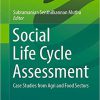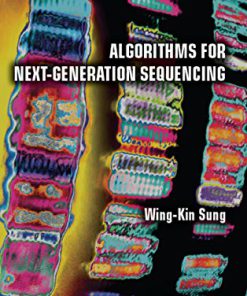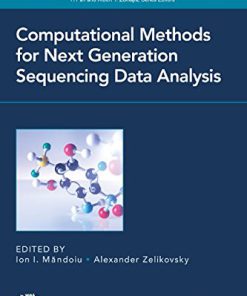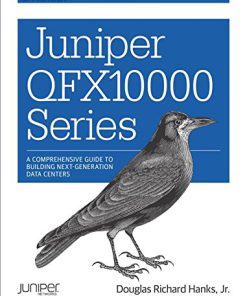Materials and Processes for Next Generation Lithography 1st Edition by Alex Robinson, Richard Lawson ISBN 0081003587 9780081003589
$50.00 Original price was: $50.00.$25.00Current price is: $25.00.
Materials and Processes for Next Generation Lithography 1st Edition by Alex Robinson, Richard Lawson – Ebook PDF Instant Download/Delivery: 0081003587, 978-0081003589
Full download Materials and Processes for Next Generation Lithography 1st Edition after payment

Product details:
ISBN 10: 0081003587
ISBN 13: 978- 0081003589
Author: Alex Robinson, Richard Lawson
As the requirements of the semiconductor industry have become more demanding in terms of resolution and speed it has been necessary to push photoresist materials far beyond the capabilities previously envisioned. Currently there is significant worldwide research effort in to so called Next Generation Lithography techniques such as EUV lithography and multibeam electron beam lithography.
These developments in both the industrial and the academic lithography arenas have led to the proliferation of numerous novel approaches to resist chemistry and ingenious extensions of traditional photopolymers. Currently most texts in this area focus on either lithography with perhaps one or two chapters on resists, or on traditional resist materials with relatively little consideration of new approaches.
This book therefore aims to bring together the worlds foremost resist development scientists from the various community to produce in one place a definitive description of the many approaches to lithography fabrication.
- Assembles up-to-date information from the world’s premier resist chemists and technique development lithographers on the properties and capabilities of the wide range of resist materials currently under investigation
- Includes information on processing and metrology techniques
- Brings together multiple approaches to litho pattern recording from academia and industry in one place
Materials and Processes for Next Generation Lithography 1st Table of contents:
Chapter 1: Overview of Materials and Processes for Lithography
- Introduction
- Overview of Lithography Process
- Lithographic Exposure Sources and Processes
- Characterization and Figures of Merit for Resists
- Resist Materials and Chemistry
- Challenges in Modern Resist Design
- Conclusions
Chapter 2: Molecular Excitation and Relaxation of Extreme Ultraviolet Lithography Photoresists
- Introduction
- Extreme Ultraviolet Molecular Excitation
- Extreme Ultraviolet Molecular Relaxation
- Extreme Ultraviolet Processes in Condensed Films
- Outlook and Conclusions
Chapter 3: Theory: Electron-Induced Chemistry
- Introduction
- Mechanisms for Electron-Induced Reactions
- Potential Role in Lithography
- Conclusions
Chapter 4: EUV Lithography Process Challenges
- Introduction
- EUV-IL as a Characterization and Nanopatterning Tool
- Resist Material Challenges
- Conclusions
Chapter 5: EUV Lithography Patterning Challenges
- Extreme Ultraviolet Lithography: Pushing Optical Lithography to the Extreme
- Extreme Ultraviolet Resist Stochastics
- Extreme Ultraviolet Resist Progress, a Historical Perspective
Chapter 6: The Chemistry and Application of Non-Chemically Amplified (Non-CA) Chain-Scission Resists
- Introduction
- The Ceiling Temperature
- The Chemistry of Specific Polymer Resist Systems
- Summary
Chapter 7: Chemically Amplified Resists and Acid Amplifiers
- Extreme Ultraviolet Resists
- EUV CAR Resists
- Conclusion
Chapter 8: Negative-Tone Organic Molecular Resists
- Introduction
- Fullerene Resists
- Triphenylene Resists
- Calixarene Resists
- Noria Resists
- Polyphenol Resists
- Cationic Polymerization and Cross-linking
- Other Resists
- Summary
Chapter 9: Positive Molecular Resists
- Introduction
- General Characteristics
- Molecular Resist Families
- Current Status, New Concepts, and Challenges
- Conclusions
Chapter 10: Mainstreaming Inorganic Metal-Oxide Resists for High-Resolution Lithography
- Metal-Oxide Resists
- Hydrogen Silsesquioxane
- High-Z Nanocluster Patterning
- Metal-Oxide Nanocluster Patterning Materials—Present and Future
Chapter 11: Molecular Organometallic Resists for EUV (MORE)
- Introduction
- Survey of Simple Metal Complexes
- Bismuth Compounds
- Palladium and Platinum Compounds
- Tin Compounds
- Metal Oxalate Complexes
- Conclusions
Chapter 12: SML Electron Beam Resist: Ultra-High Aspect Ratio Nanolithography
- Introduction
- Photomask Production
- Electron Beam Resist Optical Properties
- SML2000 Electron Beam Performance
- Pushing the Resolution Limits
- Summary
Chapter 13: Alternative Resist Approaches
- Introduction
- Novel Approaches for EUV
- Conclusions
Chapter 14: Next Generation Lithography—the Rise of Unconventional Methods?
- The Ultimate Driving Force: Moore’s Law
- Beyond Optical: State-of-the-Art in NGL
- Beyond Scaling—Post Si-MOSFET/CMOS Technology
Chapter 15: Tip-Based Nanolithography Methods and Materials
- Scanning Probe Lithography
- Scanning Probe Lithography Classification
- Increasing the Efficiency and Throughput of Scanning Probe Lithography
- Conclusion
Chapter 16: Thermal Scanning Probe Lithography
- History
- Advantages of Thermal Scanning Probe Lithography
- Patterning with Thermal Scanning Probe Lithography
- Pattern Transfer Processes From PPA
- Conclusions
Chapter 17: Scanning Helium Ion Beam Lithography
- Introduction
- Helium Ion Beam System and Ion Solid Interactions
- Exposure of Resists in Helium Ion Beam Lithography
- Conclusions and Outlook
People also search for Materials and Processes for Next Generation Lithography 1st:
degarmo’s materials and processes in manufacturing
high temperature materials and processes
industrial materials and processes
advanced materials and processes
industrial materials and processes pdf
Tags:
Alex Robinson,Richard Lawson,Materials,Processes,Next,Generation,Lithography 1st
You may also like…
Uncategorized
Healthcare 4 0 Next Generation Processes with the Latest Technologies Janya Chanchaichujit
Computers - Programming
Algorithms for Next-Generation Sequencing 1st Edition Wing-Kin Sung
Computers - Networking
Computers - Security
Security and Privacy for Next-Generation Wireless Networks Sheng Zhong
Chemistry - Technical & Industrial Chemistry
Computers - Programming
Computational Methods for Next Generation Sequencing Data Analysis 1st Edition Ion Mandoiu
Computers - Networking











